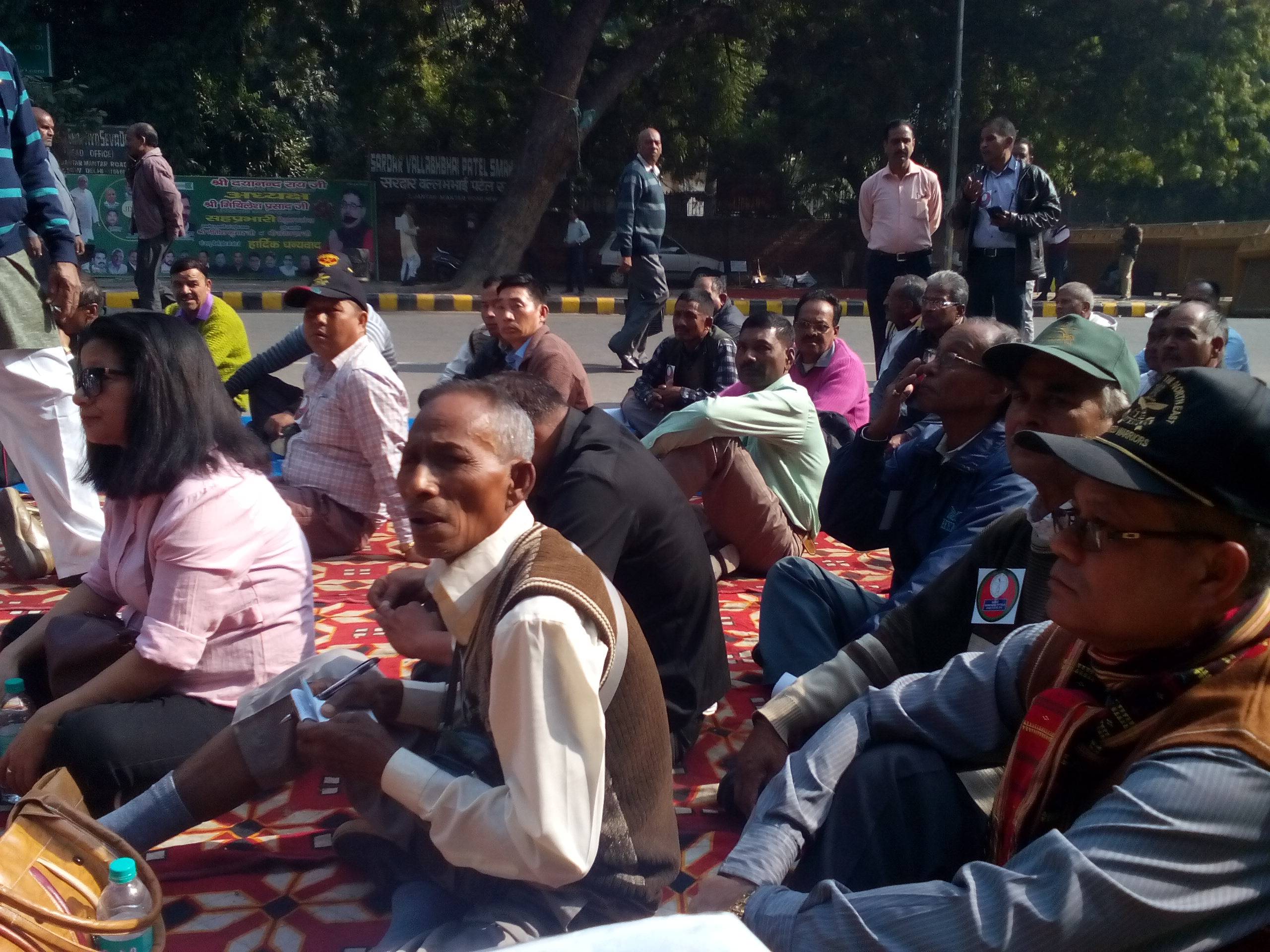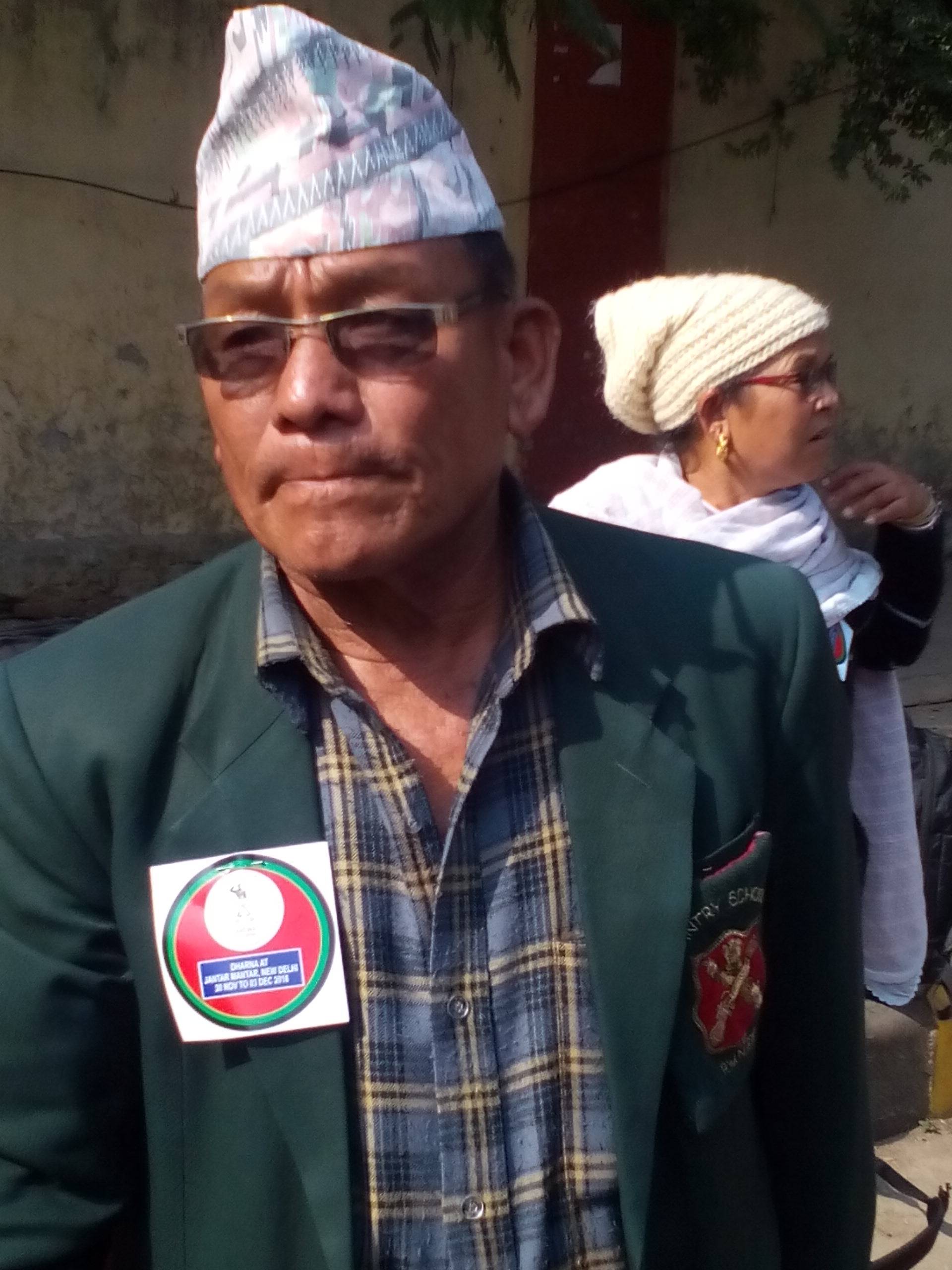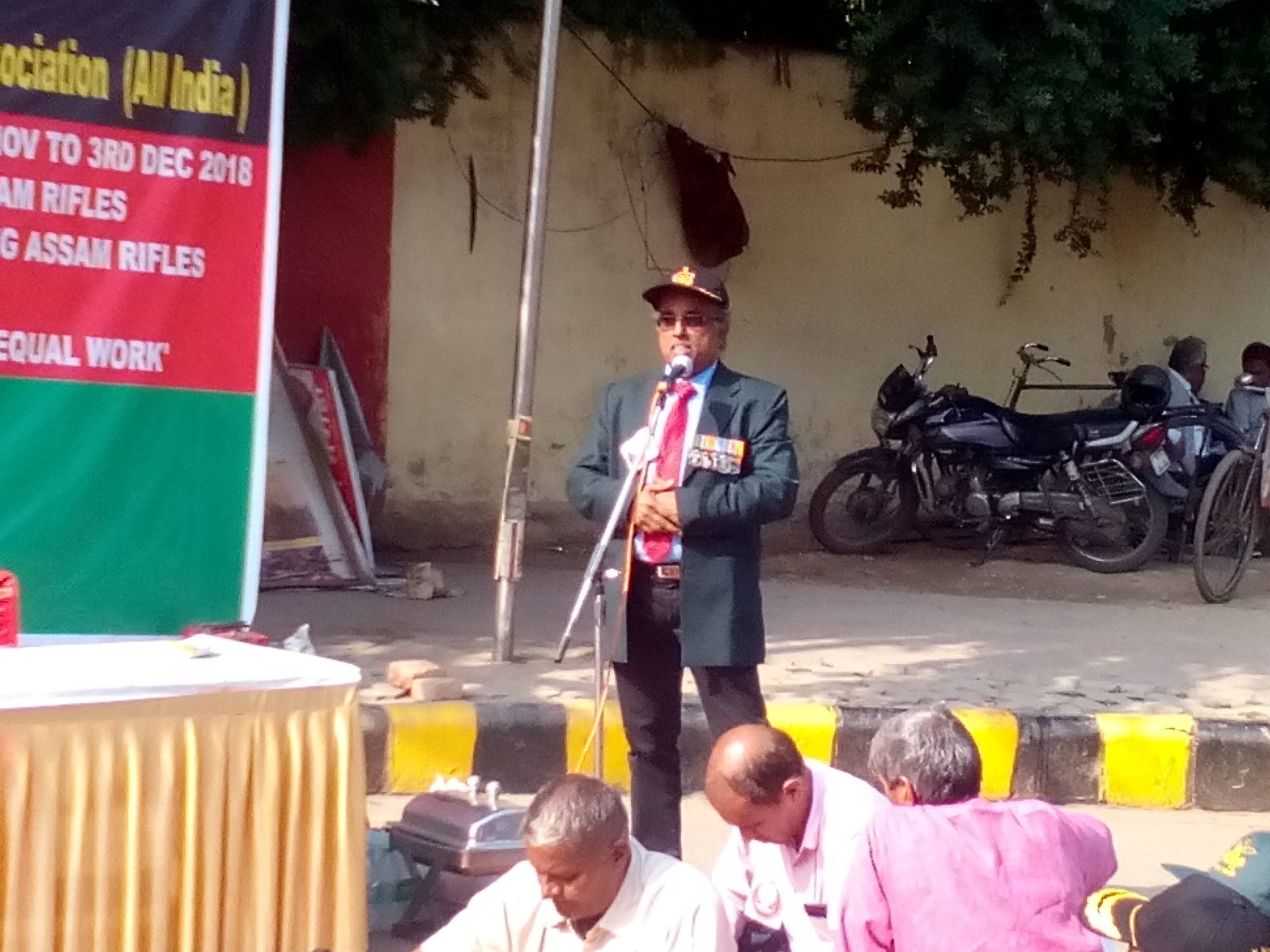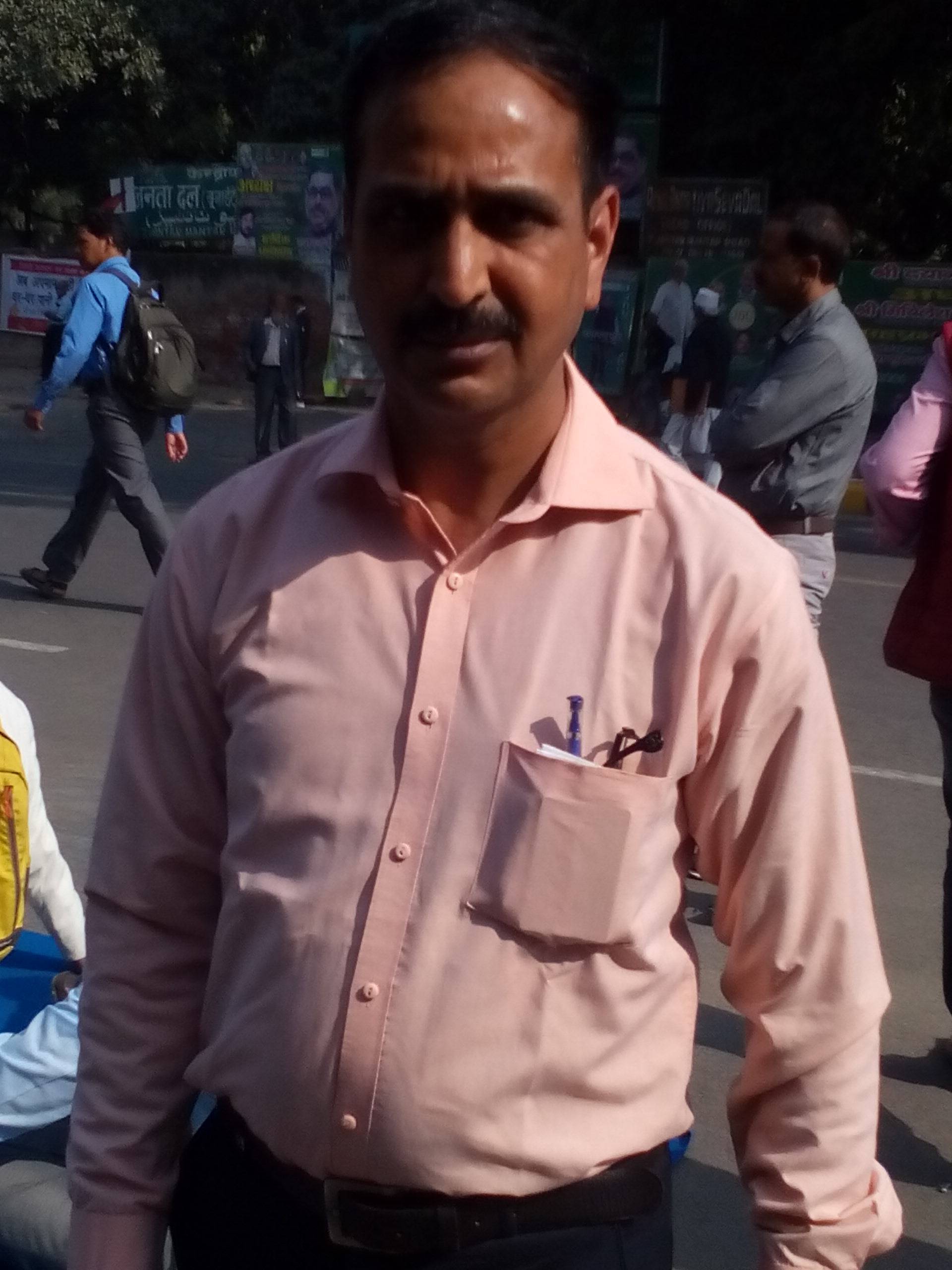Listener of Small Voices | Posted on |
Assam Rifles Protest
0
6150 Views
Country’s right civil arm & military’s left, but stepchild of Govt.
This is what Assam Rifles (AR) veterans consider as their status. While its 66000- strong servicemen are deployed across the northeastern regions, their one lakh ex-servicemen hail from across India and Nepal, some of whom were in Delhi to demand clarity of ownership and responsibility for their force.

(Assam Rifles Protest Participants)
According to the Government of India (Allocation of Business) Rules 1961, AR is under the Dept. of Internal Security, Home Affairs as ‘Police’ while it is also deemed a paramilitary force under the Ministry of Defence. This dual control makes the present functioning of the AR, the veterans claim, “without any legal sanction”, which is absurd as it operates as a special wing of the army.

(Tekman Buddha retd. 37 years service)
Additionally, this “identity crisis” creates problems for serving and retired servicemen, as their welfare measures, facilities and pension suffers.
“We are the only force that is permanently deployed in field areas – is it difficult to imagine the pressure we work under away for long periods from our family, living in hostile environments? Why are we not given pension and ESM (ex-servicemen) facilities?” demands Sub. VT Nair, General Secretary, AR Ex-Servicemen Welfare Association, that was registered in 2014 to create a stronger pressure on the government to address their grievances.

(Sub. VT Nair, General Secretary)
The AR is India’s oldest paramilitary force established in 1835 primarily to “protect British tea estates and their settlements against tribal raids” states their website. It was christened Assam Rifles in 1917 in recognition of their contribution in WW1, and has since actively and proudly fought alongside the army in WW2, 1962 (against China), 1965 & 1971 (against Pakistan), as well as been part of the peace-keeping force in Sri Lanka 1988-90, and Kashmir between 1992-95.
In fact, their press release emphasizes, the AR is “the only, along with Special Frontier Force (SFF), that can be termed a paramilitary force,” as defined by the Army Headquarters in their Staff Duties Directorate published in 1985.
The AR servicemen are disturbed by reports that the government is considering scrapping the AR altogether to merge it with the Indo-Tibetan border police to form an Indo-Myanmar Border force.
“Why? This is like erasing history!” they say.

(Anil Kumar retd. 22 years of service)
They have had no less than 20 meetings between Feb.01, 2016 to July 21, 2017, with ministers and bureaucrats, who have all promised empty actions so far.
Through legal redress, the organization has managed to secure sanction for canteen and ECHS facilities, and their petition is pending in the Delhi High Court for parity in pay, allowances, pension, and other benefits.
However, the AR also needs to reclaim their trust and credibility in the civil sphere that has taken a beating in the past decades. Some of their servicemen have been accused of indulging in heinous excesses under the cloak of the AFSPA in the north-east, most prominently in the horrific torture, rape, and murder of 34-year-old Thangjam Manorama in Manipur, which should be used to understand and correct the problems, rather than brushing them under the carpet by doing away with the historic AR force altogether.
